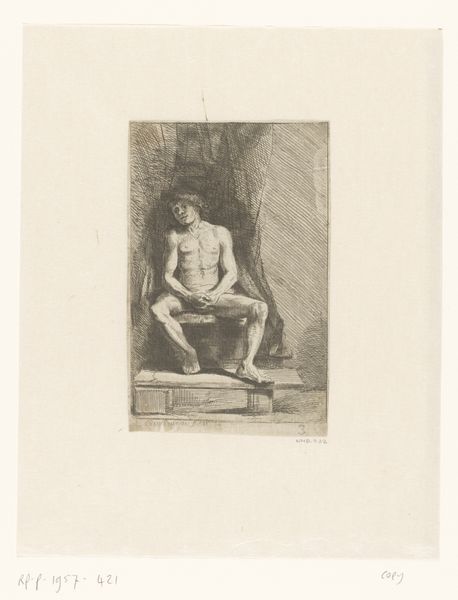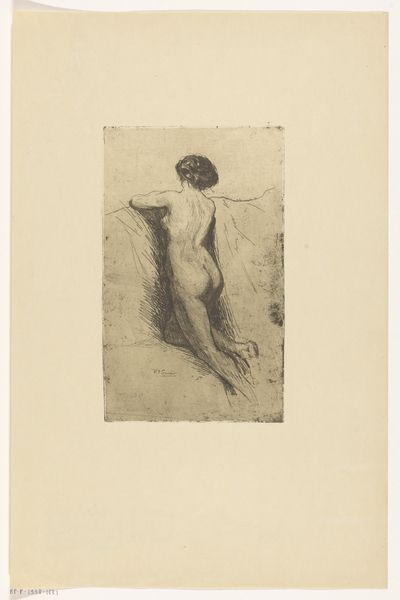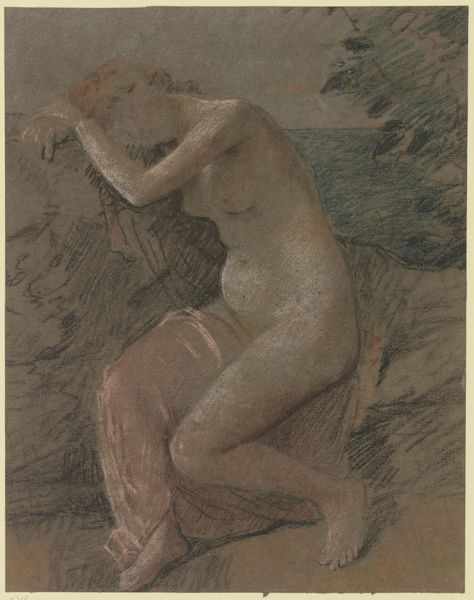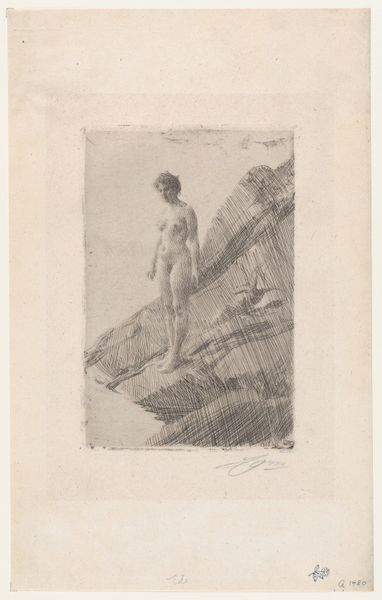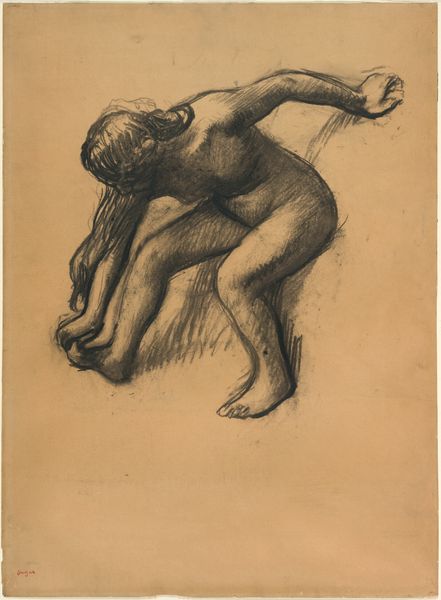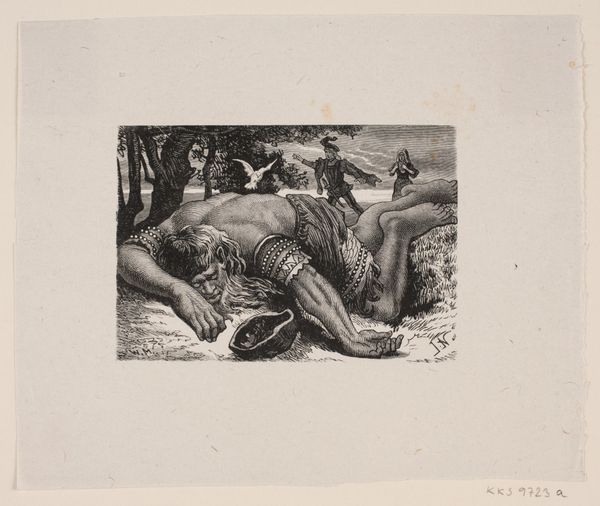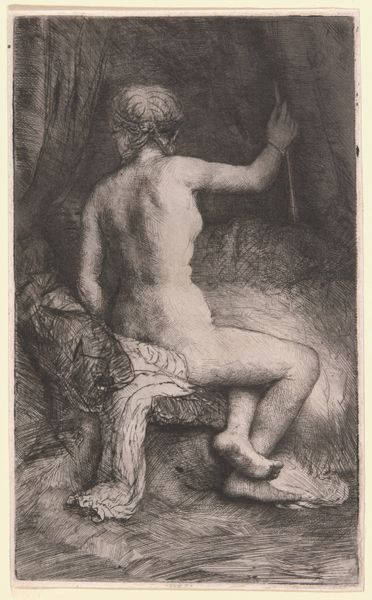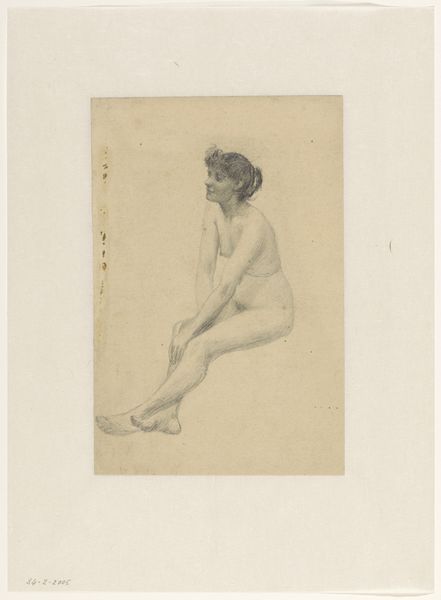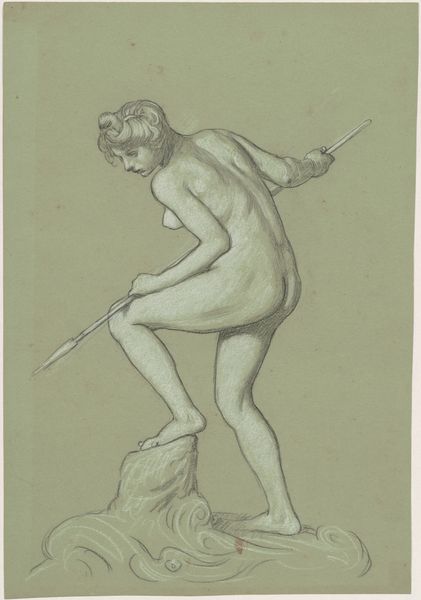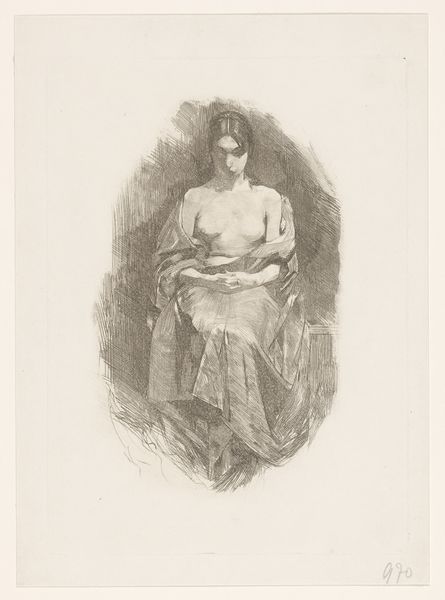
Zweite Zukunft from Eva und die Zukunft (Rad.-Werk III) 1898
0:00
0:00
drawing, print, etching
#
drawing
# print
#
etching
#
caricature
#
figuration
#
symbolism
#
nude
#
male-nude
Dimensions: Plate: 11 5/8 x 10 1/2 in. (29.5 x 26.6 cm) Sheet: 23 5/8 x 17 1/4 in. (60 x 43.8 cm)
Copyright: Public Domain
Curator: Welcome. Here we have Max Klinger’s 1898 etching, "Zweite Zukunft from Eva und die Zukunft," part of his "Eva and the Future" series. It is currently held here at The Metropolitan Museum of Art. Editor: My first impression? Stark. There’s a real weight to the somber tones, a kind of grim solitude that resonates from the solitary figure in this somewhat bleak landscape. Curator: Klinger, immersed in symbolism, often drew on classical and mythological themes. Consider how the production of a print, through repetitive actions on a copper plate, can echo societal pressures shaping individual fates. The creation of this print would have required planning and precision using specialized tools and an acid bath. Editor: Precisely. The figure's pose, nearly fetal, with his weapon poised—the spear—suggests vulnerability and potential aggression all at once. His nakedness further strips him bare, both literally and symbolically. The somber sky in the background reinforces the feelings of doom that this is all leading to. There’s a reference to an ancient archetype here, I feel it strongly. Curator: The print medium itself would have been understood in the context of its time. Etchings and prints played a role in circulating ideas and images. Did it perhaps, in a period of change and angst about "the future," represent anxieties related to overpopulation? Editor: It speaks to our inherent fears of the unknown, and humanity's relationship with the nature as represented by the seal. Also note that the figure straddles a sleek seal that seems almost submerged or dead. Is it a literal kill or a metaphorical subjugation? Klinger would have studied not only mythological images, but natural history and anatomical depictions to portray that creature and the man so accurately. Curator: The tools used would influence its aesthetic impact— the artist manipulates textures of the copper, the contrasts with lights and darks— all through this act of physical labor, reflecting Klinger’s social context of both embracing art and challenging bourgeoise tastes. Editor: Fascinating how an artwork so rooted in its moment can still, through its timeless symbols and carefully rendered forms, pose universal questions. Curator: Indeed. A poignant glimpse into the material world, forever altered by the enduring presence of visual ideas and techniques.
Comments
No comments
Be the first to comment and join the conversation on the ultimate creative platform.
